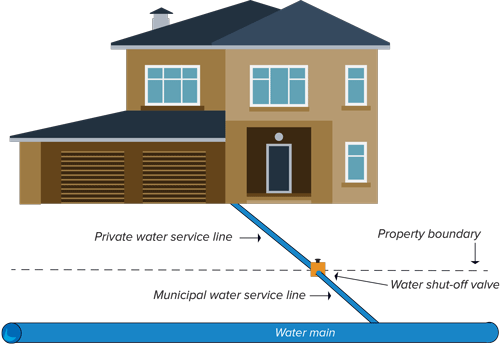Lead Service Line Replacement Program Overview
New York State Lead Service Line Replacement Plan
View the plan for replacing lead service lines in New York State. This report details the implementation of the LSLRP, resources and techniques for identifying lead service lines throughout the state, the estimated cost of replacing lead service lines, and provides recommendations on methods for evaluating the status of LSLs present and guidance on replacement.
New York’s Clean Water Infrastructure Act of 2017 (Act) amended Public Health Law to require the New York State Department of Health to implement a Lead Service Line Replacement Program (LSLRP). Municipalities do not need to apply to the program as eligibility has been pre-determined by the Department based on criteria contained in the Act.
These pages provide an overview of the LSLRP, program eligibility, awards, and answers to frequently asked questions.Why was the LSLRP created?
Drinking water can be a source of lead exposure. Service pipes that contain lead can corrode, causing lead to enter drinking water. This occurs especially where the water has characteristics such as high acidity or low mineral content that corrode pipes and fixtures. Corrosion also occurs often in brass or chrome‐plated brass faucets and fixtures with lead solder causing significant amounts of lead to leach into the water, especially hot water.
The presence of a lead service line does not always mean a home has a lead issue. However, lead in drinking water can be a problem:
- The U.S. Environmental Protection Agency (EPA) estimates that drinking water contaminated with lead can contribute to 20 percent or more of a person’s total exposure to lead.
- Infants who consume mostly mixed formula can receive 40 percent to 60 percent of their total exposure to lead from drinking water.
What will the LSLRP do?

LSLRP funds will be used to replace the entire length of residential lead service lines, from the municipal water main to the residence, in an effort to reduce the amount of lead in drinking water. LSLRP-awarded municipalities will work with homeowners to confirm the presence of a lead service line and the need to have it replaced. Municipalities will coordinate the replacement of the lead service line and submit project related vouchers/invoices to the State for reimbursement.
For municipalities that are awarded the LSLRP funds, allowable costs include:
- Engineering fees (planning, design and construction)
- Legal fees
- Municipal administration fees
- Construction (materials, equipment, workforce)
- Site/property restoration